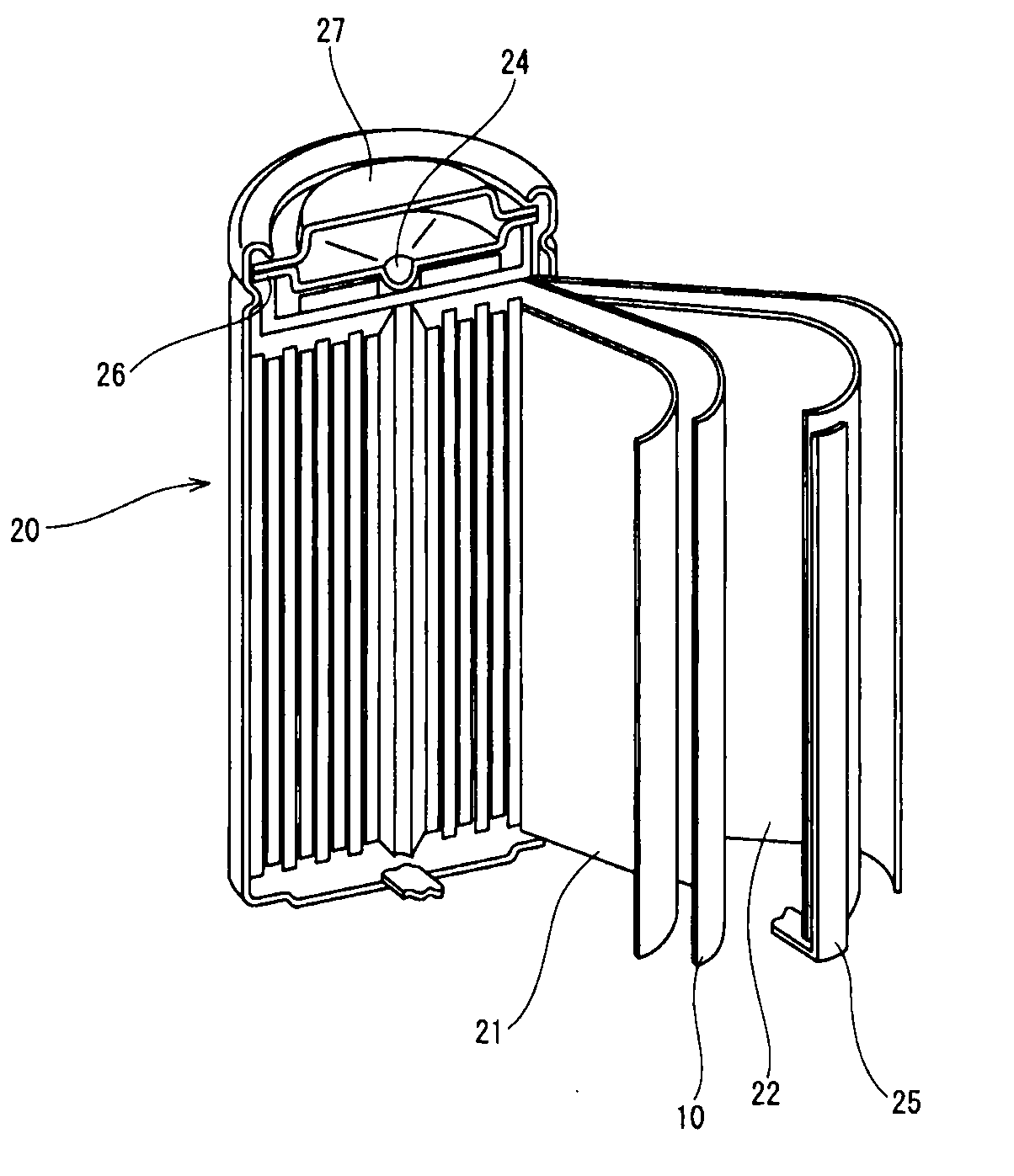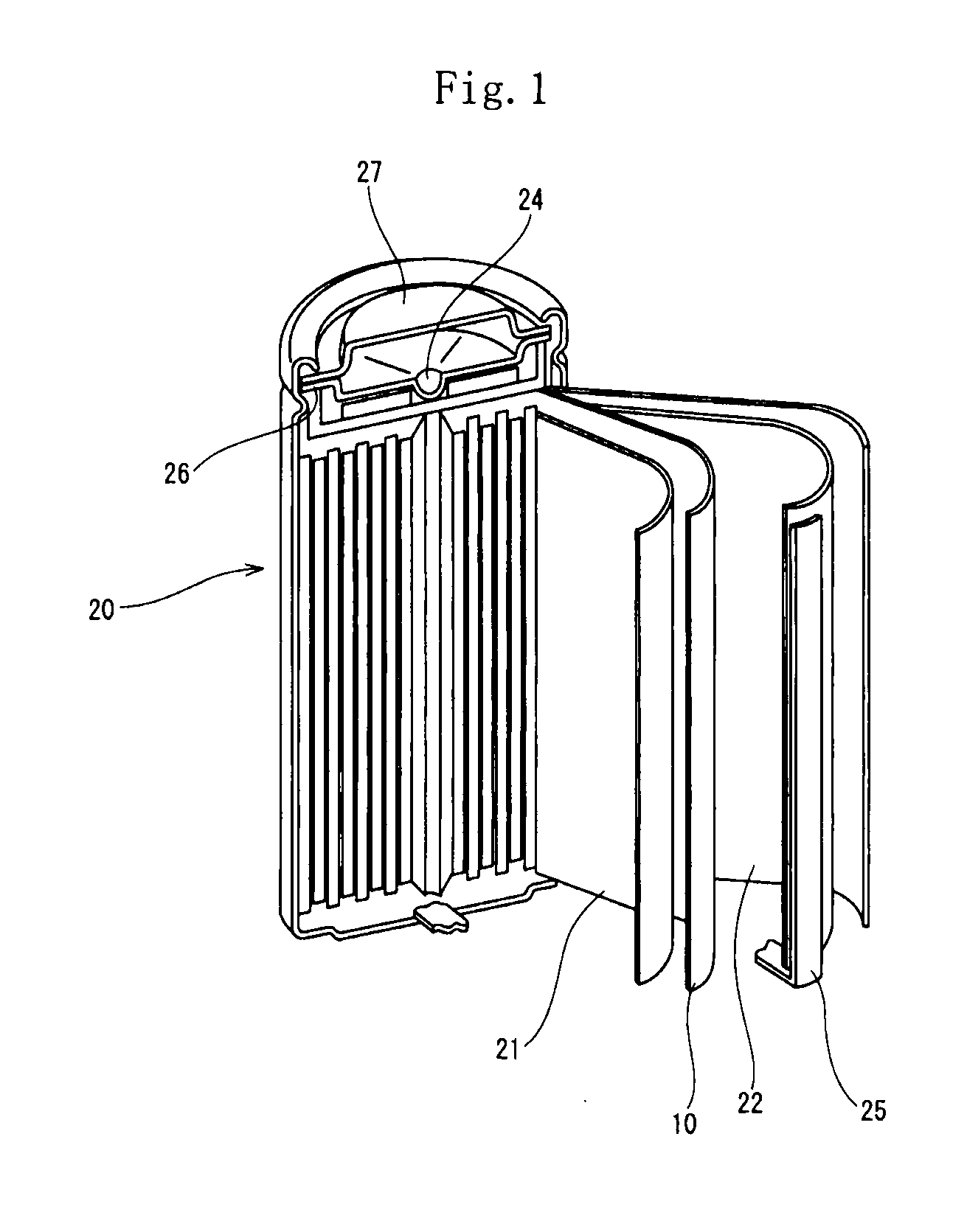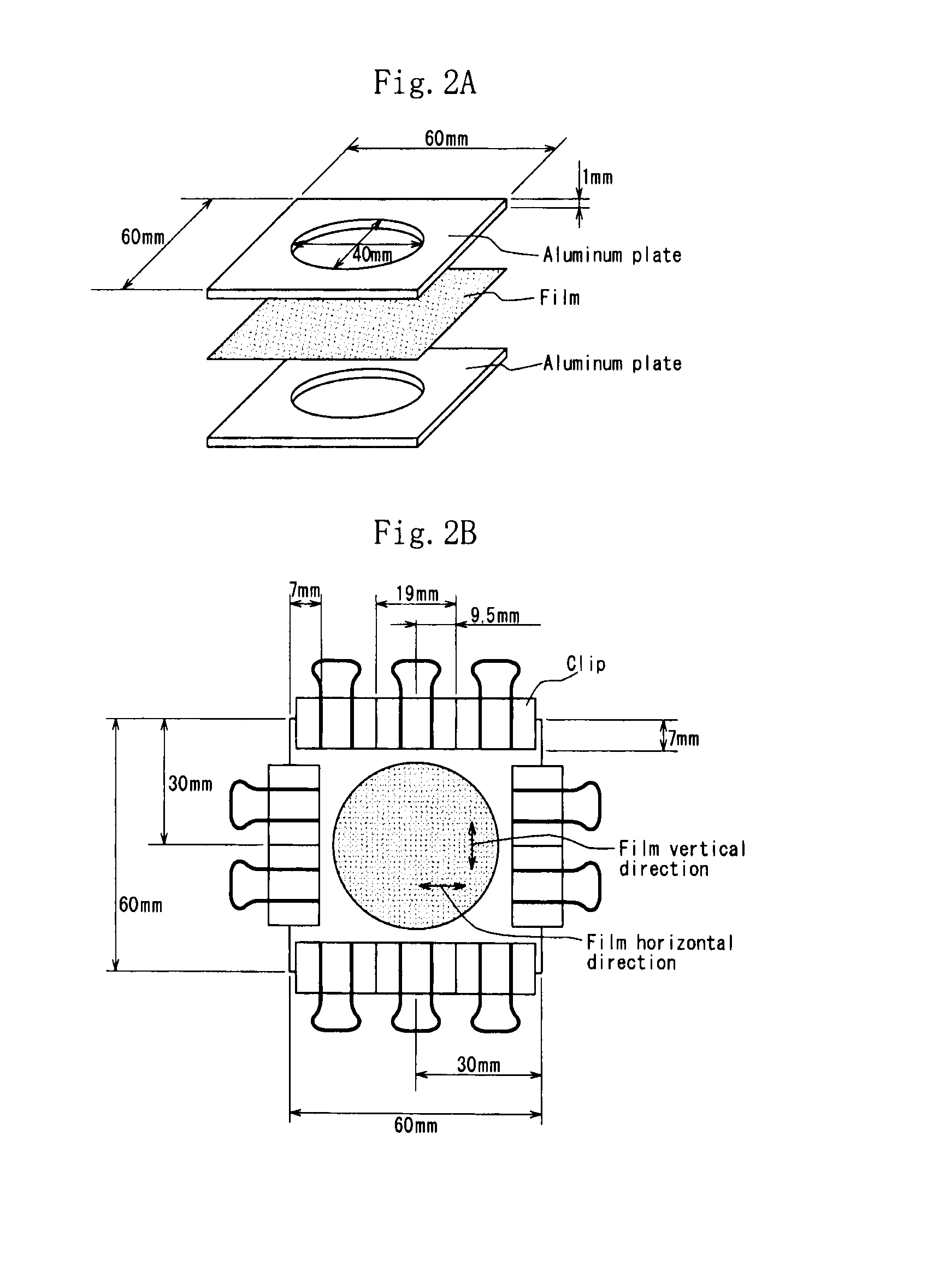Laminated porous film and separator for battery
- Summary
- Abstract
- Description
- Claims
- Application Information
AI Technical Summary
Benefits of technology
Problems solved by technology
Method used
Image
Examples
examples 1-1 through 1-4
and Comparison Examples 1-1 and 1-2
[0278]Based on the composition of the materials of each layer shown in table 1, materials of each layer were supplied to a twin screw extruder (diameter: 40 mm φ, L / D=32) produced by Toshiba Machine Co., Ltd. to prepare a pellet of each layer of each example and comparison example. After the pellet prepared for each layer was supplied to a uniaxial extruder having a diameter of 40 mm, each pellet was extruded from a T die through a mono-layer feeding block or a two-kind three-layer feeding block according to the construction of each layer shown in table 1. After each pellet was picked up by a cast roll having a temperature shown in table 1, the pellet was cooled to solidify it. Thereby a membrane material having a width of 300 mm and a thickness of 180 μm was obtained. After the membrane material was vertically stretched between rollers by using a film roll vertically stretching machine at the stretching temperature and the stretching magnification...
third embodiment
Description of Third Embodiment
[0343]The laminated porous film of the third embodiment is described below.
[0344]The third embodiment is different from the second embodiment in that the first layer of the third embodiment also consists of a mixed resin of the PP resin and the HM resin and that the mixing ratio of the HM resin in the first layer is set lower than that of the HM resin in the second layer.
[0345]That is, it is preferable that in the third embodiment, a plurality of layers containing the mixed resin of the PP resin and the HM resin is formed. The mixing ratios of the HM resin in these layers are different from one another.
[0346]Specifically the difference between the content ratio (mass %) of the HM resin in a layer (second layer) having the largest content of the HM resin and a layer (first layer) having the smallest content of the HM resin is set to favorably 1 to 50 mass %, more favorably 5 to 40 mass %, and most favorably 10 to 30 mass %
[0347]The mixing ratio of the P...
examples 2-1 through 2-6
and Comparison Examples 2-1 Through 2-3
[0354]As shown in table 3, the materials of the second layer were supplied to a same-direction twin screw extruder (diameter: 30 mm φ, L / D=30) produced by Techno Bell Co., Ltd. The materials of the first layer were supplied to a same-direction twin screw extruder (diameter: 40 mm φ, L / D=32) produced by Toshiba Machine Co., Ltd. After the materials were fused and mixed with each other respectively at 290° C., they was extruded from a T die via a mono-layer feeding block, a two-kind two-layer feeding block or a two-kind three-layer feeding block according to the construction of each layer shown in table 2. After the materials of each of the first and second layers were picked up by a cast roll having the temperature shown in table 2, the materials were cooled to solidify them. Thereby unstretched membrane materials each having a width of 300 mm and a thickness of 180 μm were obtained. At that time, the fused membrane materials were in contact wit...
PUM
| Property | Measurement | Unit |
|---|---|---|
| Temperature | aaaaa | aaaaa |
| Temperature | aaaaa | aaaaa |
| Temperature | aaaaa | aaaaa |
Abstract
Description
Claims
Application Information
 Login to View More
Login to View More - R&D
- Intellectual Property
- Life Sciences
- Materials
- Tech Scout
- Unparalleled Data Quality
- Higher Quality Content
- 60% Fewer Hallucinations
Browse by: Latest US Patents, China's latest patents, Technical Efficacy Thesaurus, Application Domain, Technology Topic, Popular Technical Reports.
© 2025 PatSnap. All rights reserved.Legal|Privacy policy|Modern Slavery Act Transparency Statement|Sitemap|About US| Contact US: help@patsnap.com



